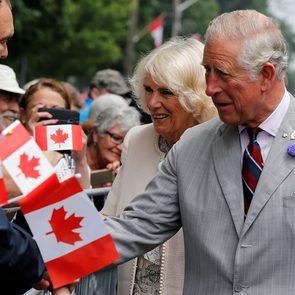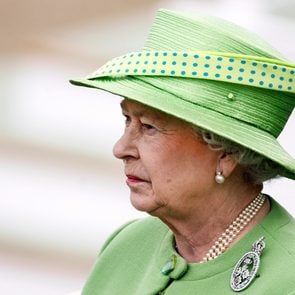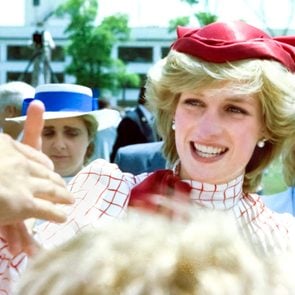Remembering Her Majesty Queen Elizabeth II: 1926 – 2022
Royal historian Carolyn Harris looks back at the incredible life and legacy of Queen Elizabeth II and her special relationship with Canada.
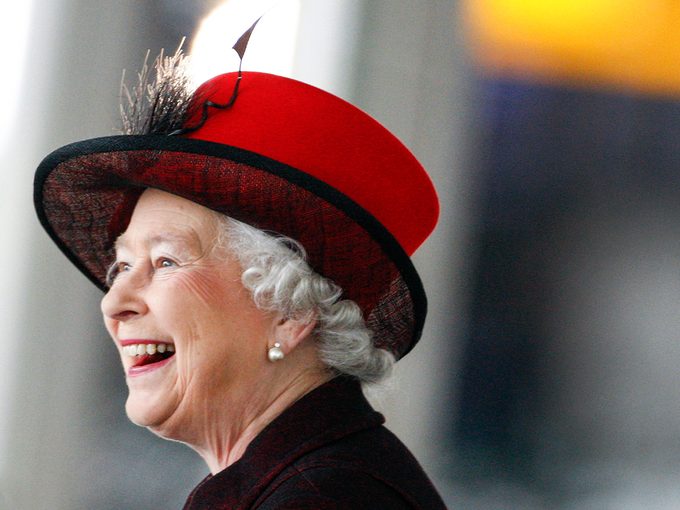
The Life and Legacy of Queen Elizabeth II
On her 21st birthday, the future Queen Elizabeth II set the tone for the rest of her long and remarkable life in a radio broadcast, pledging to the Commonwealth, “I declare before you all that my whole life, whether it be long or short, shall be devoted to your service and the service of our great imperial family to which we all belong.”
It was 1947, and Elizabeth was on her first overseas tour, visiting South Africa and what is now Zimbabwe with her parents King George VI and Queen Elizabeth (later the Queen Mother) and her younger sister, Princess Margaret. The speech became one of the iconic moments in Elizabeth’s life, quoted during the major milestones of her reign, and performed by Claire Foy during the third season of The Crown on Netflix.
As Queen Elizabeth II, she presided over the final transition from the British Empire to a Commonwealth of equal nations, exercising subtle diplomatic influence in her role as Head of the Commonwealth. Throughout her reign, the Queen set an example of duty and public service, committed to her role as Queen of more than a dozen Commonwealth realms including Canada, Australia, New Zealand and numerous countries in the Caribbean and South Pacific. She became the best travelled monarch in history, embracing opportunities to connect with people from all walks of life from around the world.
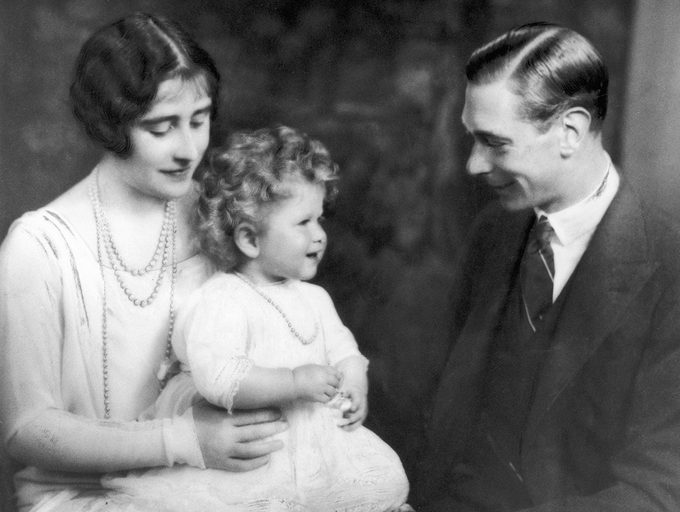
The Young Princess
Elizabeth was not born to be Queen. When Princess Elizabeth Alexandra Mary of York was born at the London home of her maternal grandparents on April 21, 1926, her grandfather reigned as King George V, but her father, then Prince Albert, Duke of York, was only the king’s second son. Following the First World War, George V had granted his children permission to marry members of the British aristocracy (instead of foreign royalty alone) and the Duke of York had wed Lady Elizabeth Bowes-Lyon, the daughter of the Scottish Earl and Countess of Strathmore. The Duke and Duchess of York carried out royal duties and royal tours, but the Duke’s elder brother was expected to one day reign as King Edward VIII, make a suitable marriage and father children of his own. The birth of Princess Elizabeth was overshadowed in the news by a general strike in the United Kingdom that lasted for nine days. Nevertheless, there was intense popular interest in the young Elizabeth and her sister Margaret Rose, who was born in 1930.
The young princess had a happy childhood. The Duke and Duchess of York and their children were a close family who enjoyed spending time together in their home on Piccadilly Street near Hyde Park in London. The princesses were educated at home by a Scottish governess, Marion Crawford, and a series of French governesses. The schedule of lessons was undemanding, and the princesses enjoyed long summer holidays in Scotland and time spent with both sets of grandparents and their extended family. Elizabeth was passionate about dogs, horses and spending time in countryside; interests that she would maintain throughout her life. Compared to her playful younger sister Margaret, Elizabeth was serious and conscientious from a young age. Future British Prime Minister Winston Churchill observed when Elizabeth was a toddler, “She has an air of authority and reflectiveness astonishing in an infant.”
Don’t miss our ultimate guide to royal residences.
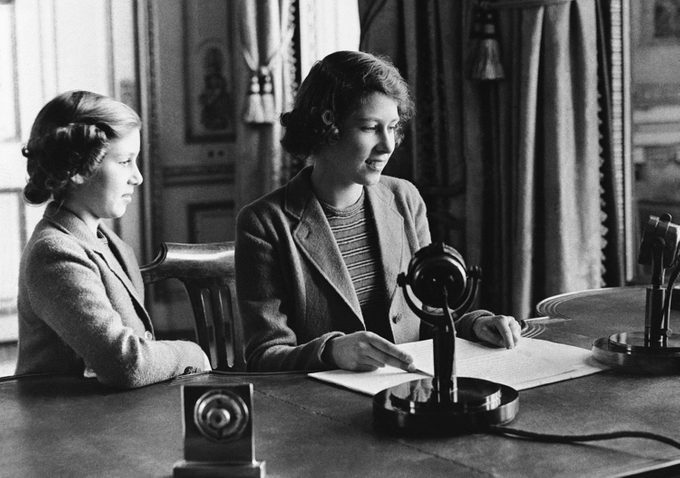
Abdication and War
Princess Elizabeth’s life changed forever in 1936, known as the “Year of Three Kings.” In the span of that year, her grandfather George V died, her uncle Edward VIII abdicated to marry the twice-divorced American Wallis Simpson, and her father unexpectedly succeeded to the throne as King George VI (the name signifying continuity with the previous generation). Elizabeth moved into Buckingham Palace with her parents and sister and there were rumours that she reacted to the news of her uncle’s abdication by praying for a baby brother who would displace her as first in the line of succession.
The new King and Queen made efforts ensure their daughters would have some experiences in common with other girls their own age. As members of a Buckingham Palace Girl Guide Company, the princesses learned to pitch tents and make campfires in the vast palace gardens. Despite this, Elizabeth was increasingly aware of her responsibilities as heiress presumptive. Her widowed grandmother Queen Mary shared her love of royal history and took both Elizabeth and Margaret to historical sites while the provost of Eton College at Windsor gave Elizabeth lessons in constitutional history. Her education as a future Queen, however, came largely from shadowing her father George VI and learning from his example.
Elizabeth and Margaret spent the Second World War at Windsor Castle while their parents stayed at Buckingham Palace on weekdays and travelled widely to visit bomb-damaged communities and encourage the war effort. During the Blitz, the Windsor Castle windows were blacked out and the medieval dungeons were repurposed as bomb shelters. Elizabeth played a role in the war effort herself. At 14, she delivered her first radio broadcast, addressing the children of the Commonwealth, including British evacuees who were far from home, stating, “We know, every one of us, that in the end all will be well; for God will care for us and give us victory and peace. And when peace comes, remember it will be for us, the children of today, to make the world of tomorrow a better and happier place.” At 16, she became honourary Colonel-in-Chief of the Grenadier Guards and undertook her first solo public engagement reviewing the troops. At 18, she joined the Auxiliary Territorial service as a Second Subaltern, where she trained as a mechanic and was soon promoted to Junior Commander.
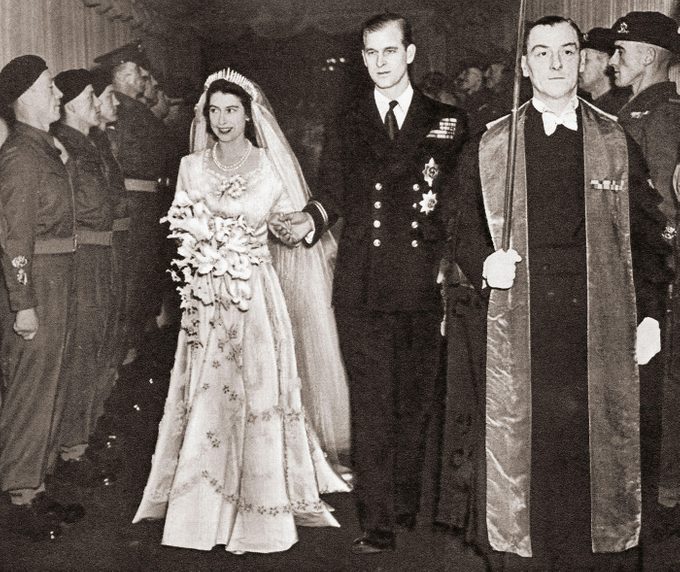
A Royal Romance
The war also provided opportunities for Elizabeth to spend time with Prince Philip of Greece and Denmark, an officer in the royal navy five years her senior who visited Windsor Castle while on leave.
Elizabeth had first noticed her distant cousin during a tour of Dartmouth Naval College in 1939 and they corresponded while Philip was on active service. One of Elizabeth’s Scottish cousins, Margaret Rhodes, later recalled, “Princess Elizabeth was enamoured from an early age. I’ve got letters from her saying, ‘It’s so exciting. Mummy says ‘Philip can come and stay.’’” After the war, Philip and Elizabeth enjoyed drives in the countryside and visits to the theatre including a performance of the musical Oklahoma!.
Their engagement was announced after the royal family’s return from South Africa in 1947 and they were married at Westminster Abbey on November 20 that same year. The marriage lasted for 73 years until Philip’s death on April 9, 2021. On their Golden Anniversary in 1997, the Queen reflected on her marriage in a speech at the London Guildhall, stating, “He is someone who doesn’t take easily to compliments but he has, quite simply, been my strength and stay all these years, and I, and his whole family, and this and many other countries, owe him a debt greater than he would ever claim, or we shall ever know.”
Prince Philip almost always accompanied the Queen when she travelled outside the United Kingdom. Princess Elizabeth first visited Canada in 1951 with Prince Philip, representing King George VI who was unable to travel because he had just had surgery for lung cancer. The young Princess was impressed by Canada, stating in a speech, “From the moment when I set foot on Canadian soil…I knew myself to be not only amongst friends but amongst fellow countrymen.” The young princess seemed serious compared to her smiling husband as she was worried about her father’s health, but there were lighthearted moments on the tour, including a square dance at Rideau Hall and a trip to the Calgary Stampede where Elizabeth wore the mink coat that had been one of her official wedding gifts from Canada.
Take a look back at Queen Elizabeth’s incredible life in photos.
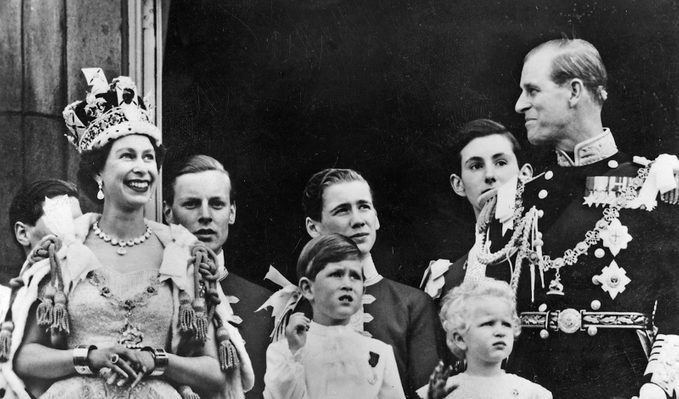
The Young Queen
On February 6, 1952, George VI died in his sleep from thrombosis following years of declining health, exacerbated by heavy smoking. The new Queen Elizabeth II was with Prince Philip at the Treetops Safari Lodge in Kenya on a royal tour that was supposed to continue across the Indian Ocean to Australia and New Zealand. Philip broke the news to his wife and the royal party immediately returned to London. The Queen Mother wrote to her mother-in-law, Queen Mary, “I cannot bear to think of Lilibet, so young to bear such a burden.” The Queen received widespread public sympathy and approval for her quiet dignity in mourning and the photograph of the three Queens in black was published in newspapers around the world. The Queen’s grandson, Prince William, stated at the time of the Diamond Jubilee, “Back then, there was a very different attitude to women. Being a young lady at 25—and stepping into a job which many men thought they could probably do better—it must have been very daunting. And I think there was extra pressure for her to perform.”
Elizabeth was crowned Queen in Westminster Abbey on June 2, 1953. The coronation service dated back to the reign of the Anglo-Saxon King Edgar the Peaceable in 973 AD, and the Queen would mark the 1,000th anniversary of this milestone at Bath Abbey in 1973. The Queen was the first monarch to be crowned as sovereign of each of the Commonwealth realms, including the Queen of Canada. The coronation symbolized a lifelong commitment: a marriage between sovereign and people and, in contrast to several of her contemporaries on continental European thrones, the Queen would never consider abdication. There was a key modern innovation at Queen Elizabeth II’s coronation, however: the presence of television cameras in the Abbey, allowing millions of people around the world to watch the service and share in the celebrations. Over the course of her reign, the Queen found innovative ways to the connect with the public, whether it was televising the annual Christmas message, inviting film crews to capture moments in the daily lives of the royal family in a 1969 documentary or reviving the royal walkabout, which had been so successful during her parents’ visit to the Cenotaph in Ottawa during their 1939 Royal Tour of Canada.
Check out Britain’s 10 most memorable coronations.
Queen Elizabeth II became the most well-travelled monarch in history. She would visit Canada more often than other Commonwealth realm outside the United Kingdom, undertaking 22 official visits including opening Parliament in 1957, opening the St. Lawrence Seaway with American president Dwight Eisenhower in 1959, attending Expo 67 in Montreal and signing the patriation of the constitution with Prime Minister Pierre Trudeau in 1982. During the Queen’s reign, Canada emerged as one of the world’s most welcoming countries for immigrants; a place where diverse cultural and religious traditions could peacefully coexist. The Queen praised the Canadian spirit of multiculturalism in a 1973 speech at the Royal York Hotel in Toronto, stating, “I am here as Queen of Canada, and all Canadians—not just one or two ancestral strains.” The speech was well received by the Canadian public. Not all the Queen’s Canadian tours were as successful. In 1964, she faced protestors in Quebec who associated the monarchy with British oppression. In the 1990s, the Queen’s tours of Canada were sometimes overshadowed by the visits of her children and salacious headlines concerning the breakdowns of their marriages.
Here are 10 Canadian hotels that have hosted royal guests.
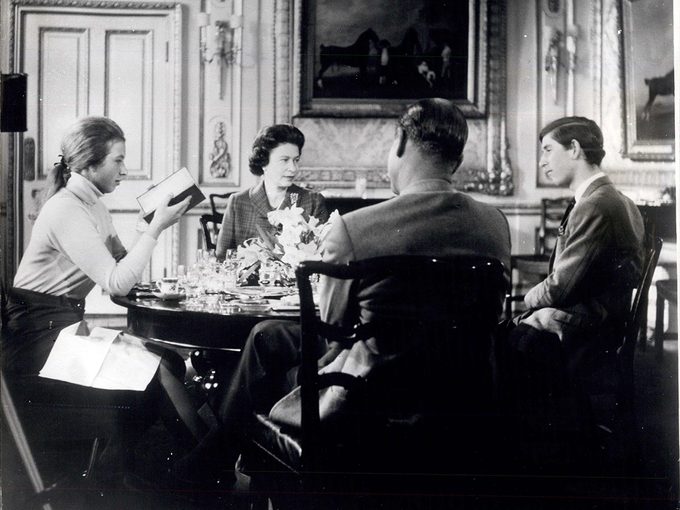
Royal Family Life
The Queen and Prince Philip had four children: Prince Charles (later Prince of Wales and now King Charles III, born 1948), Princess Anne (later Princess Royal, born 1950), Prince Andrew (later Duke of York, born 1960) and Prince Edward (later Earl of Wessex, born 1964). The family would gradually expand to include eight grandchildren and a dozen great-grandchildren. The royal couple enjoyed spending time with their children, especially Christmases at Sandringham House in Norfolk, summer holidays at Balmoral Castle in Scotland and cruises on the Royal Yacht Britannia (now a museum ship in Leith Harbour). The Queen adjusted the timing of her weekly meeting with the British Prime Minister to ensure that she was present at bedtime when her children her young. In private, the Queen was known for her sense of humour and was an excellent mimic.
There were many disruptions to the Queen’s family life, however. First Prince Philip’s naval career, then a busy schedule of royal duties including the extended Commonwealth tours of the 1950s and 1960s, often separated the Queen from her children for long periods of time. Unlike the Queen and her sister, this new generation of royal children were educated outside the home, attending boarding schools, which Charles found to be a particularly miserable experience. The Queen left many decisions regarding her children’s education and upbringing to Philip and was not inclined to closely manage them as adults, allowing them to make their own decisions as they grew older. This relaxed approach was critiqued in the press when the Queen’s children experienced difficulties in their domestic lives. The respective marriages of Charles to Lady Diana Spencer, Andrew to Sarah Ferguson and Anne to Mark Phillips all ended in divorce, and royal scandals received unrelenting press coverage that undermined the reputation of the royal family. In 1992, the year of Anne’s divorce, Andrew’s separation, the publication of Diana: Her True Story by Andrew Morton and a devastating fire at Windsor Castle, the Queen reflected in a speech, “1992 is not a year on which I shall look back with undiluted pleasure. In the words of one of my more sympathetic correspondents, it has turned out to be an annus horribillis.”
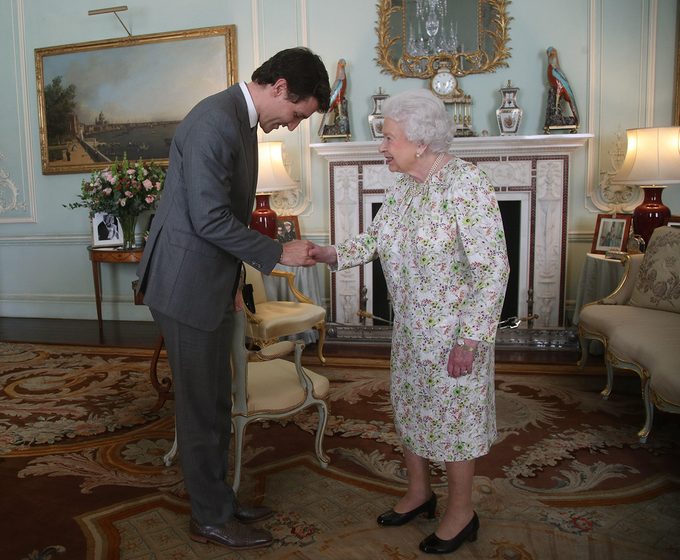
Queen and Commonwealth
While the press was fascinated by life behind palace doors, Queen Elizabeth II continued her schedule of public engagements and Commonwealth tours. As a constitutional monarch, she was obliged to act on the advice of her British Prime Ministers in the United Kingdom—but her role as Head of the Commonwealth provided opportunities for quiet diplomatic influence on the world stage. Despite the reservations of some of her Prime Ministers, the Queen was present for Commonwealth Heads of Government meetings from 1973 when she accepted an invitation to the Ottawa meeting on the advice of her Canadian Prime Minister at the time, Pierre Trudeau. (The Queen joked at the 2015 Commonwealth Heads of Government meeting in Malta that the new Canadian Prime Minister, Justin Trudeau, made her “feel so old” when he referred to royal tours during his father’s time.) At these biennial meetings, the Queen introduced the leaders of newly independent countries to seasoned politicians, encouraging networking and joint initiatives amongst Commonwealth nations. In 1985, in a meeting in Nassau that was dramatized in Season 4 of The Crown on Netflix, the Queen worked with Commonwealth leaders to pressure South Africa to end apartheid. Former Prime Minister Brian Mulroney later recalled in an interview with The Toronto Star, “[The Queen] and I became quite close during the fight to free [Nelson] Mandela. She was very unhappy, as you know, with the British government’s position, as articulated by Margaret (Thatcher).”
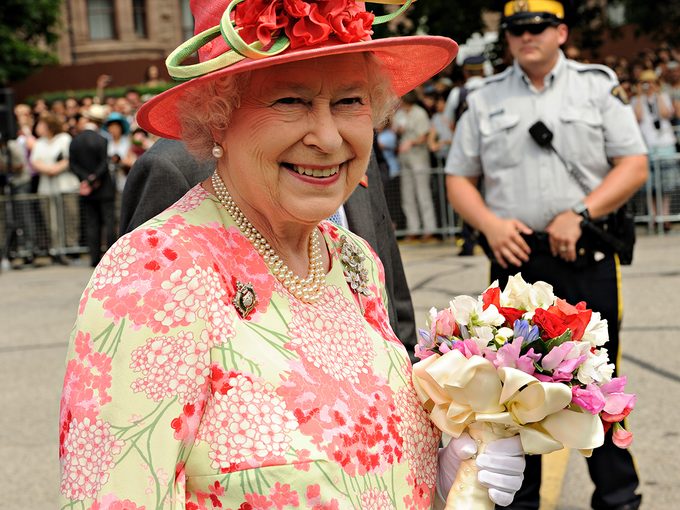
A Monarch’s Milestones
In the 21st century, Queen Elizabeth II celebrated key milestones in her reign: The Golden Jubilee in 2002, the Diamond Jubilee in 2012, and the Platinum Jubilee in 2022. While the monarchy had been criticized and scrutinized in the 1990s, these celebrations of the anniversaries of the Queen’s accession to the throne were met with an outpouring of acclaim for her decades of public service.
For the Queen, the Golden Jubilee celebrations were tempered by the deaths of two of her closest family members. Both Queen Elizabeth the Queen Mother and Princess Margaret died in 2002. Despite her grief at the loss of her mother and sister, the Queen and Prince Philip embarked on a busy schedule of Commonwealth tours to mark the Golden Jubilee, travelling to Australia, New Zealand, Jamaica and Canada.
The Queen visited Canada for the last time in 2010, celebrating Canada Day on Parliament Hill and prompting a resurgence of popular interest in the monarchy in Canada. At an official dinner in Toronto in the Queen’s honour, Prime Minister Stephen Harper delivered a speech filled with hockey metaphors in which he praised the Queen as Canada’s “Most Valuable Player.”
In 2011, the Queen visited Australia for the last time, where she gave a speech at the Perth Commonwealth Heads of Government Meeting. Addressing the meeting’s theme, “Women as Agents of Change,” the Queen stated, “We must continue to strive in our own countries and across the Commonwealth together to promote that theme in a lasting way beyond this year.” The speech was widely viewed as a quiet endorsement of the introduction of a gender-neutral line of succession in the United Kingdom and Commonwealth realms where the eldest child of the monarch, male or female, would succeed to the throne regardless of the presence of younger brothers.
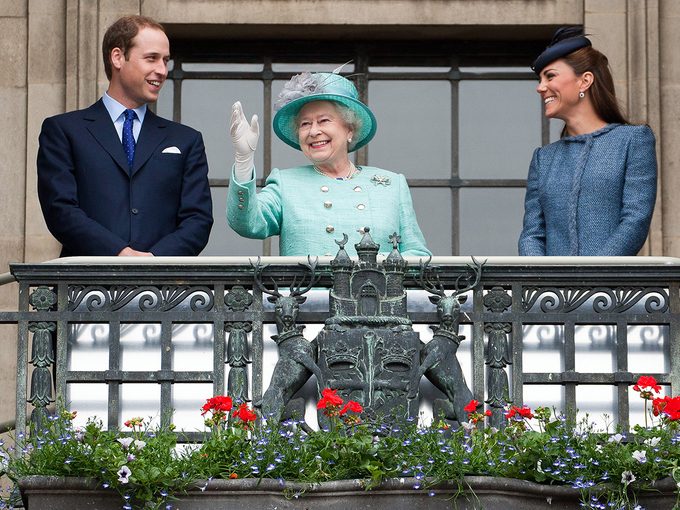
A Record-Breaking Reign
By the Diamond Jubilee of 2012, the Queen and Prince Philip had limited their engagements to within the United Kingdom while their children and grandchildren undertook the Commonwealth tours which had been central to the Queen’s schedule for decades. The Queen and Prince Philip gradually passed their charitable patronages to the next generation as well. Charles and his eldest son William performed investitures and accompanied the Queen to official events, especially after Philip’s retirement from public life in 2017.
On September 9, 2015, the Queen became the longest reigning monarch in British and Commonwealth history, surpassing the previous record set by her great-great-grandmother Queen Victoria in 1897. Like Victoria, Elizabeth marked the historic milestone quietly—in the company of grandchildren and great-grandchildren—at Balmoral Castle in Scotland. While Victoria became longest reigning monarch during a visit from her granddaughter, Empress Alexandra of Russia, grandson-in-law Czar Nicholas II and their baby daughter Grand Duchess Olga, Elizabeth hosted her grandson Prince William (now Prince of Wales), his wife Catherine, Duchess of Cambridge (now Princess of Wales), and their children Prince George and Princess Charlotte.
The Queen had provided advice and support for William during the breakdown of his parents’ marriage, inviting him to lunch at Windsor Castle on weekends when he was attending nearby Eton College for secondary school. William praised his grandmother at the time of her Diamond Jubilee, saying “My relationship with my grandmother has gone from strength to strength.” The Queen approved of William’s marriage to Catherine Middleton in 2011, the first woman from a middle-class background to marry a direct heir to the throne since 1660.
Victoria had been the matriarch of an extended family of European royal houses. Elizabeth presided over a royal family that was increasingly relatable to the public as her grandchildren undertook independent careers and married spouses from a variety of backgrounds, setting the tone for the future of the monarchy in the 21st century.
During the COVID-19 pandemic, the Queen drew parallels between the crisis and the Second World War. In a speech broadcast from Windsor Castle, 80 years after her wartime address to the children of the Commonwealth, the Queen declared, “[My sister and I] as children spoke from here at Windsor to children who had been evacuated from their homes and sent away for their own safety. Today, once again, many will feel a painful sense of separation from their loved ones, but now as then, we know deep down that it is the right thing to do. While we have faced challenges before, this one is different. This time we join with all nations across the globe in a common endeavour.”
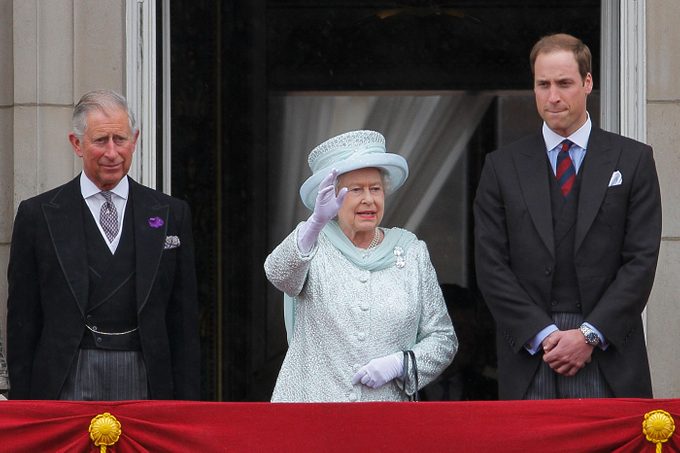
Looking to the Future
On November 14, 2021, the widowed Queen was absent “with great regret” at the National Service of Remembrance at the Cenotaph in London. Her son Charles, who turned 73 that day, laid the first wreath on her behalf.
Charles had spent most of his life as heir to the throne, observing his mother’s example and gradually assuming her busy schedule of overseas tours and public engagements. Although the Queen made efforts to ensure that the eventual transition from one reign to another would be straightforward, the question of the future monarch’s role as Head of the Commonwealth was less certain.
In 2018, the Queen attended her last Commonwealth Heads of Government Meeting, hosted at Buckingham Palace and Windsor Castle. The meeting celebrated the Queen’s decades of service to the Commonwealth and looked to the future. In a speech to Commonwealth leaders, the Queen emphasized the importance of a smooth transition, stating, “It is my sincere wish that the Commonwealth will continue to offer stability and continuity to future generations and will decide one day the Prince of Wales should carry on the important work started by my father in 1949.”
As King Charles III, Charles will build upon Queen Elizabeth II’s tireless example of duty and public service as the sovereign and Head of the Commonwealth.
Next, take a look back at the Queen’s extraordinary life in 30 quotes.
